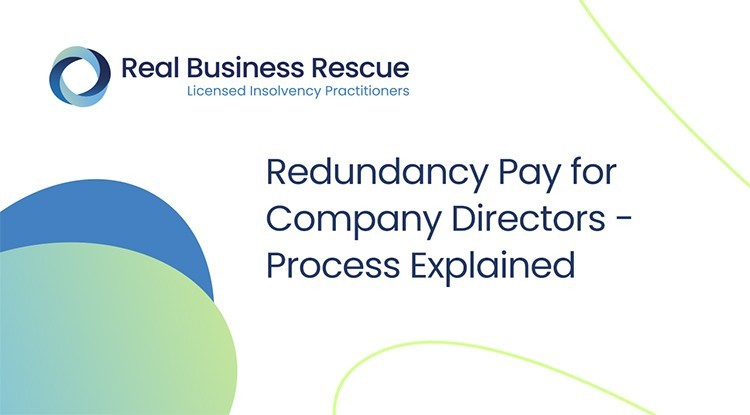Clarified: If a Company Goes Bust Who Pays Redundancy in the UK?
Unloading the Approaches for Mitigating Company Redundancy and Enhancing Organizational Durability
In today's vibrant company landscape, the capability of organizations to navigate obstacles and unpredictabilities is extremely important for lasting sustainability. Mitigating business redundancy and improving organizational durability have actually come to be focal factors for leaders striving to adjust and flourish in an ever-evolving market. By delving right into the ins and outs of critical preparation, labor force optimization, and technological integration, companies can not only improve their procedures yet likewise fortify their structures to hold up against unpredicted interruptions. As we check out the multifaceted techniques used by forward-thinking companies, a much deeper insight emerges right into the proactive actions necessary for fostering agility and perseverance when faced with change.
Assessing Current Organizational Redundancies
To efficiently evaluate existing business redundancies within a company, a detailed review of the existing obligations, functions, and procedures is crucial. if a company goes bust who pays redundancy. By carrying out a thorough examination of the numerous functions and jobs performed within the company, administration can determine locations where replication of initiatives or inefficiencies exist. This assessment ought to not only concentrate on individual job roles yet additionally consider exactly how various departments communicate and collaborate
One approach to reviewing redundancies is to analyze work summaries and obligations to determine any type of overlaps or voids in obligations. In addition, examining the workflow and communication channels can disclose bottlenecks or unneeded actions in processes. It is vital to involve staff members in any way degrees throughout this examination to get understandings from those directly entailed in day-to-day procedures.

Executing Agile Labor Force Strategies
Adhering to a thorough assessment of existing organizational redundancies, the application of nimble workforce techniques comes to be important for enhancing functional efficiency and adaptability. Dexterous workforce methods include developing a dynamic and adaptable job atmosphere where staff members can promptly adapt to changing service requirements. One essential facet of implementing active workforce approaches is cultivating a society of constant discovering and development. This entails providing employees with the essential devices, sources, and training to get brand-new abilities and proficiencies. Additionally, companies can boost agility by advertising cross-functional groups that can quickly work together and shift focus based on concern jobs.
One more important aspect of nimble labor force strategies is advertising transparent interaction and encouraging workers to make decisions autonomously within their roles. By decentralizing decision-making processes, companies can react much more effectively to opportunities and obstacles. In addition, embracing nimble project administration approaches, such as Scrum or Kanban, can increase and improve workflows productivity. On the whole, implementing active workforce methods can help companies remain competitive in today's quickly evolving business landscape.
Leveraging Innovation for Performance
Leveraging sophisticated technical remedies can considerably improve operational performance within companies seeking to maximize and improve processes resource utilization. By incorporating automation tools, artificial intelligence, and information analytics, companies can streamline click now process, lower manual errors, and make data-driven decisions without delay. Automation can deal with recurring tasks, allowing workers to concentrate on more strategic campaigns, thus improving efficiency and development.
Additionally, the application of cloud computer solutions makes it possible for seamless collaboration among employee, despite their physical location. This promotes interaction, boosts project monitoring, and improves general performance. Additionally, making use of customer relationship administration (CRM) software program can aid organizations better understand their clients' requirements, individualize communications, and eventually raise consumer satisfaction and commitment.
Urging Constant Knowing and Advancement
Implementing a society of continual learning and development is essential for promoting growth and flexibility within a vibrant organizational atmosphere. Motivating workers to engage in ongoing knowing opportunities not just boosts their individual abilities but additionally adds to the general strength of the firm. By prioritizing continual discovering, companies can stay abreast of industry fads, adapt to technical improvements, and continue to be affordable on the market.
To successfully encourage constant learning and development, business can establish understanding and development programs, provide chances for upskilling and reskilling, provide access to on-line courses and resources, and create a helpful understanding environment. Managers play a crucial duty in promoting a culture of understanding by leading by example, providing feedback and coaching, and recognizing and rewarding employees' learning achievements.
Structure a Resistant Company Society
Establishing a durable corporate culture is paramount for companies looking for to navigate challenges and thrive in an ever-evolving company landscape. A resilient company society is defined by adaptability, openness, open communication, and a strong feeling of function. To build such a society, leaders must prioritize fostering trust fund amongst employees, urging partnership, and promoting a development way of thinking. Clear communication concerning organizational adjustments, difficulties, and successes is essential in developing a culture where employees really feel informed and valued. In addition, offering possibilities for expert development, acknowledging and rewarding workers' contributions, and promoting work-life equilibrium are vital elements of a durable corporate culture.
Leaders play a significant role fit the society of a company. By leading by example, demonstrating durability despite hardship, and actively sustaining their groups, leaders can infuse these values throughout the organization. A durable business society not just aids companies endure difficulties but likewise promotes technology, improves staff click to investigate member engagement, and eventually contributes to long-lasting business success.
Verdict
To conclude, the techniques for reducing business redundancy and enhancing organizational strength are critical for keeping competition in today's dynamic business environment. By analyzing existing redundancies, carrying out nimble workforce approaches, leveraging modern technology, motivating reference continuous understanding and growth, and developing a resilient company culture, organizations can adjust to transform, boost effectiveness, and foster development. These proactive actions will help business navigate obstacles, reduce disruptions, and make sure long-term success in the ever-evolving industry.
Complying with a comprehensive analysis of present business redundancies, the application of agile labor force strategies ends up being crucial for optimizing functional efficiency and versatility - if a company goes bust who pays redundancy. Overall, carrying out agile workforce approaches can help business remain competitive in today's swiftly evolving service landscape
A resilient business society not just helps business hold up against challenges however additionally fosters advancement, boosts employee interaction, and inevitably adds to long-term organizational success.
